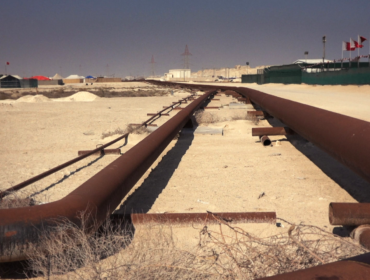Or about the art of finding out what it means to really feel good
Just recently I spoke to Chris McCormack about this topic. He puts it like this:” My body is my work place. To release a really great performance, I have to feel really good.”
It sounds simple, but is not. All of you who train regularly I am sure, can confirm this statement. It is not easy to find out what it means to feel great. Most of the time you don’t know until afterwards when you can put the delivered performance into relation with the perceived condition you were in. It may well happen, that your body perception was misleading you, that you could have bet that you felt good, but then if your performance was bad, you are even more disappointed.
What went wrong?
Did you train too much or too little, did you feel pressured, stressed, did expectations break you? Was there fear or guilt? Did you really give yourself enough recovery time? What suffers first is wellbeing, wellbeing, a condition that can only be defined by you, illnesses follow later, and are a lot easier to assess. At least there are some parameters that indicate diseases that need not to be questioned. Transition phases, the in-between are another headache, you don’t feel well, you are not sick, and diagnostics are without results. What to do then?

The following article tries to filter out some options
Beside training to improve endurance and technical skills, you have to learn to listen to your body or in other words you have to your very own method that helps you to interpret body signs. This process has to be integral part of training.
Chris says,” the body is pretty smart, it takes what it wants and needs at some point. It remembers everything. If it has to take by force, what the athlete is not willing to give, this game can take a bad turn: loss of performance, susceptibility towards injuries and infections, overtraining, burn-out, chronic fatigue syndrome can be the results. The list of complications is endless.”
“Fatigue and exhaustion must be taken seriously and are not to be mistaken for laziness,” Chris points out. With a knowing smile he adds: “Sometimes it is not so easy either, distinguishing laziness from being tired. Only if you feel really good, as a whole, the body as a complete entity, only then can peak performance be accessed at the exact right time. There aren’t just the muscles, you see, there is the mind, the heart, the lungs and the immune system at its center. All of these systems are connected, are dependent on each other and must work together perfectly. And that is exactly what you can practice by proper training”, says Chris.
Experience is the key and experiments a precondition – the example MACCA
MACCA under 8 hours in Roth 2005, 2006, 2007 – the same races, but different mindset
In Roth Chris has finished under 8 hours three times, every time under totally different circumstances. The first time he desperately wanted to stay under 8 hours. He came to the starting line super fit and super thin. It was a very hard and painful race, that under 8 race. The second time he weighed nearly 4 kilos more and was not quite as fit. Actually he had just come for a laid-back race. But everything went perfectly. This time it seemed to him as if it was nothing special at all to stay under 8 hours. The third time, on may the 3rd, 2007, it was nearly taken for granted to stay under that time line.
Chris knows about the pacing of an under – eight – hour race better than most people, its not a big blank anymore.
MACCA in Hawaii 2006, 2007, 2009, 2010 and again the same races, but totally different mindsets
Chris’ Hawaii history is very similar. Here I a give you only a very brief summary. You can read it on his blog in a much better way. 2006 it was a smile of Normann Stadler that broke him, it was not physical so. 2007 Chris was under extreme pressure to finally win. This precondition made the 2007 race very demanding for his body and mind. It was not hard because of his competitors, it was hard because of his attitude towards the race.
2009 he felt he had to prove himself after the mechanical defect in 2008 that he was still able win this race. It was a great performance, but no win, to many issues on run-up to the race and on the course.
2010 Chris was relaxed, almost nobody had him on the list of favorites. He did not have the feeling that has to prove anything, not to himself and not to others. Everyone knows, He won this race, and on top of this it was probably the race of his life.
Peaking on time needs beside good training a cool mind, a good strategy and flexible tactics
Through all these years of racing and training, Chris’ body has got the experience how to train and how to pace a race, and he has got the guts to experiment. Analyzing and changing a training concept that did not work for you at right moment of time… this is an experiment guided by experience. To develop the skills to know which parameters need to be adjusted, is all together a complex process not easy to tackle.
Concentration is the basis of a good training session. It is better to rest instead of training for the sake of training to kill some time or follow a training schedule. Training for long distance races is a question of pacing and mental power, of concentration, staying focused on every movement so as not to drift away when tiredness starts to kick in, even during training.
So much for Chris McCormack who as many of you may know trains without any devices.
What devices can give you
Assistance of electronic devices does make sense, if you control them and you don’t let them restrict and pressure you. Devices can reassure you, they give you figures, and they can give you a feel for changes over time, but only, if recording, observing, analyzing and interpreting regularly over time. I think the strength of electronic devices is that they make changes seizable and visible for you. Clever monitoring may well help you to find out about your body feel and perception. Cleverly monitoring for me means adding your personal condition and environmental circumstances such as food intake, illnesses, stress factors, weather conditions, sleep etc. to the curves, especially then, when the curve’s progression shows a break-off, be it a down- or a upwards trend. To obtain data is not good enough, data asks your interpretation in relation to your very own body and mind status.
Interpreting data depends on the training model you adhered to
Figures are not absolute, there meaning changes depending on the frame of reference. If you are aware of this fact, it may be easier for you detect the weaknesses of devices and the unique selling propositions they are marketed with. Most studies sadly only deal with measurable physiological and biochemical responses of the human body towards training. Devices are judged by the reliability of the data they deliver. This is not wrong per se. But there is one step missing. They miss on how the displayed figures relate to your condition of feeling good or not.
The question of how different training schemes influence performance has hardly been given attention. The specific physiological adaptation processes that can explain a change in power output have also rarely been discussed. The weaknesses of most of today’s training concepts mainly come from the fact that we simply do not know enough about the factors which determine our individual limits and bring exhaustion and tiredness with them. The reason being that most training and sport scientists subconsciously only accept one model of training physiology and therefore will not carry out an individually adapted mix of methods.
Devices use algorithms* to interpret the data collected. This interpretation follows a thought model. It is good to know which model your device favors discretely in the background. It may help you understanding the limits of the very device, and get a feeling for its weaknesses.
The next chapter will introduce the most common training models as there are:
- Biomechanical model
- Cardiovascular-anaerobic model
- Energy supply/energy deficiency model
- Muscle recruiting/muscle strength model
- Psychological, motivation model
*In mathematics and computer science, an algorithm is an effective method expressed as a finite list of well-defined instructions for calculating a function. Algorithms are used for calculation, data processing, and automated reasoning.
Many thanks for the various inspirations to TD Noakes, University of Kapstadt, South Africa




